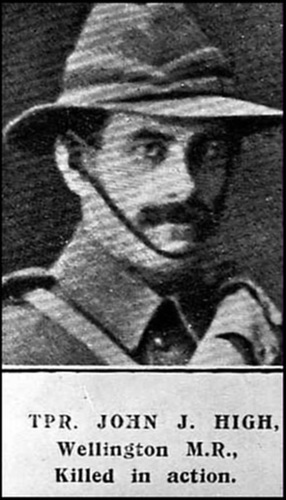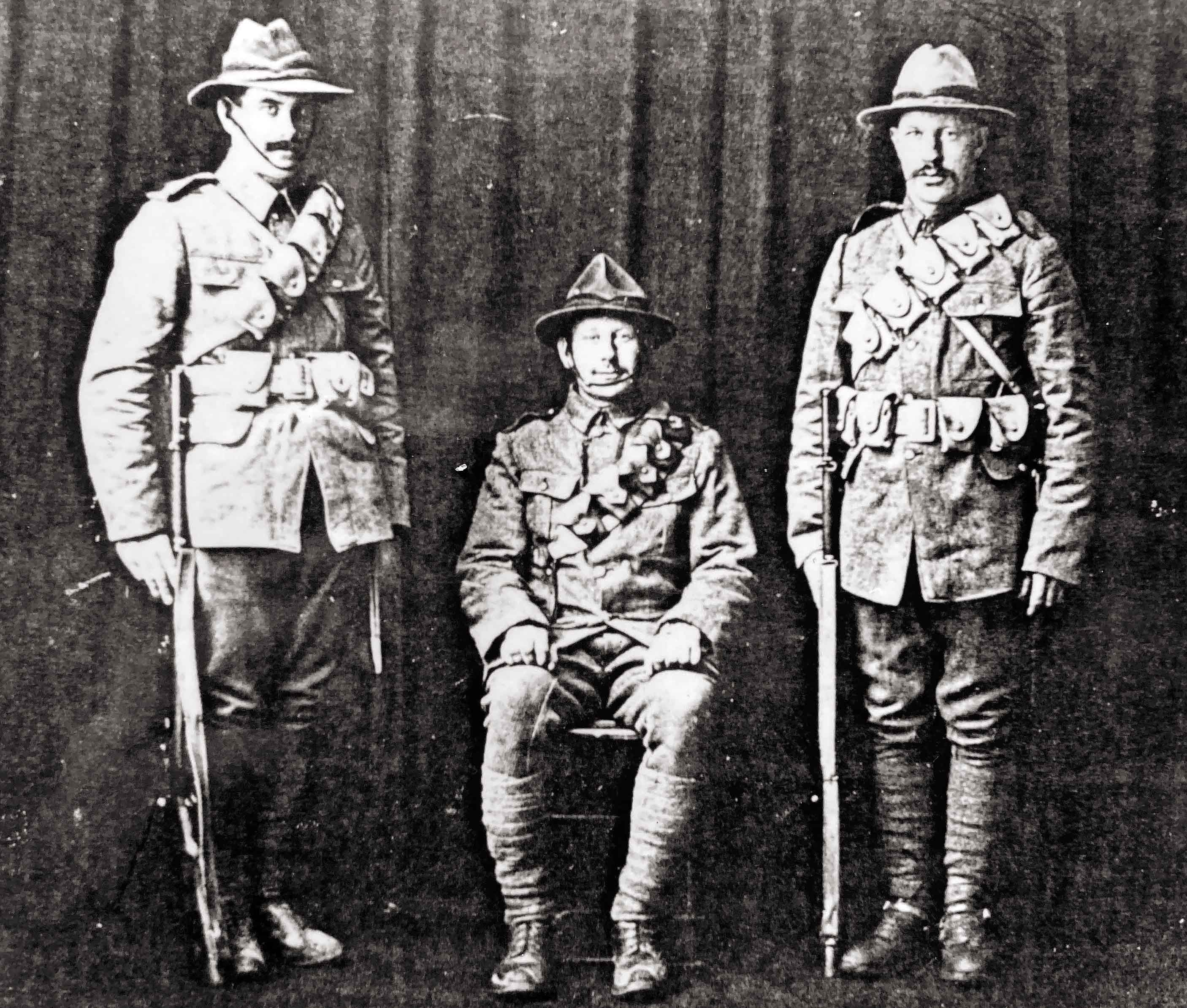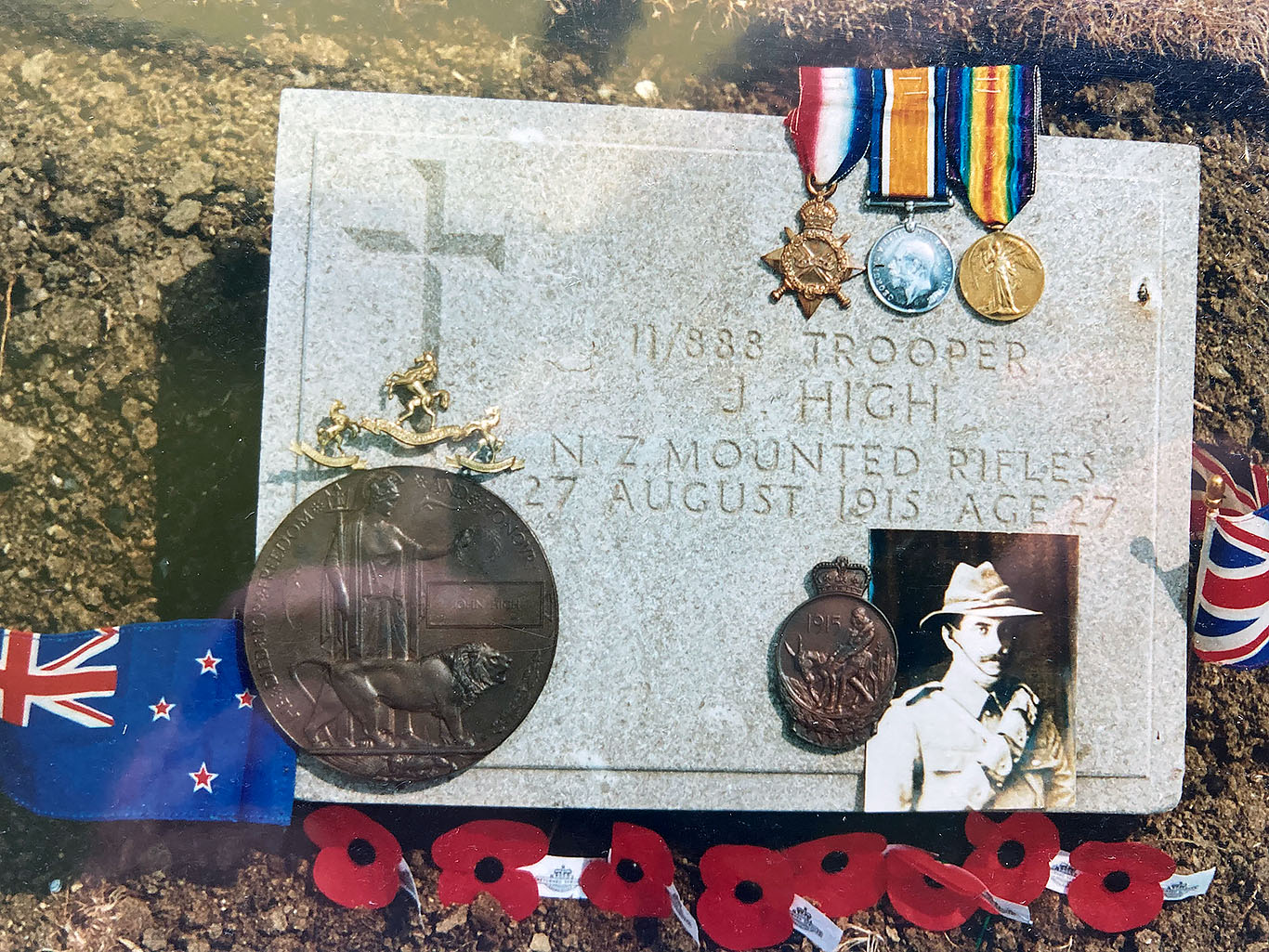Remembering Trooper John James High, Wellington Mounted Rifles

By Denys Caves (member no.1387), Wairoa, New Zealand
As the eldest of two grandnephews in New Zealand, I write of my granduncle’s service in the Gallipoli Campaign.
Stories told to me in my childhood motivated me to learn more of Trooper John High’s service. I was also the recipient of his memorabilia, passed to me by my late grandfather, William James High, who was John’s elder brother.
Family background
My grandfather was the oldest of 10 children to James High (1860–1944) of Sykebeck, Bootle, and his wife Jane (1864–1943), née Lowry.
The High and Lowry families enjoy a rich history in Cumbria and the Isle of Man. Descendants have a direct lineage to the parents of Fletcher Christian, of HMS Bounty and Pitcairn Island fame.
The High family farmed and resided predominantly in the county of Cumbria in North West England, at Sykebeck, Bootle, Kiskin, Apple Head, The Green, Millom and Haverigg.
My grandfather, William James High, emigrated to New Zealand in 1905 to work for the Russell family on Tunanui Station, Hawke’s Bay. In 1908, he was joined in New Zealand by his younger brother, John James High, who was an attendant at my grandfather’s wedding on 23 February 1910 to Flora McMillan, who also worked at the station.
The owner of Tunanui Station was Andrew Hamilton Russell, NZ-born, educated at Harrow School and the Royal Military College, Sandhurst, where he graduated with the sword of honour in 1887. Russell served in India and Burma, before resigning his commission and returning to New Zealand, although he retained his interest in soldiering, helping to raise a local militia unit, the Wellington (East Coast) Mounted Rifles Regiment, before becoming a senior officer in the New Zealand Territorial Force.
First World War
When war broke out in 1914, Andrew Russell was promoted Brigadier General and given command of the New Zealand Mounted Rifles Brigade, departing New Zealand with the main body of the first New Zealand Expeditionary Force (1NZEF) in October 1914.
My granduncle John High enlisted on 15 December 1914, his service record noting him as fully fit, 26 years of age, single and a trade horse driver for Robert Holt & Sons, Napier. Trooper 11/888 John High was assigned to the 4th Reinforcements, Wellington Mounted Rifles. On enlistment, John was gifted two horses to take overseas by the Russell family. He embarked for overseas service on 17 April 1915.

Gallipoli
On 12 May 1915, after a period of training in Egypt (where they left their horses), the Mounted Rifles Brigade landed at Gallipoli. (Trooper High would have landed later, with the 4th Reinforcements.) General Russell assumed command of the northern sector of the ANZAC perimeter, setting up his headquarters on the plateau subsequently dubbed Russell’s Top. His forces successfully captured the foothills below Chunuk Bair during the night of 6/7 August. Later that month, Russell led his exhausted and depleted brigade in the unsuccessful attacks on Hill 60.
On 27 August, Major General Herbert Cox (commander of the sector) determined on a daylight assault against the Turkish positions at Hill 60. At 5pm, after an hour-long artillery barrage, an attack was made. In the centre were rallied 300 fit troops of the NZ Mounted Rifles (Auckland 60, Canterbury 90, Otago 50, Wellington 100). On their left were the Connaught Rangers, on their right the 4th Australian Infantry Brigade.
Hill 60 remained in Turkish hands. Over four days of fighting, almost no ground was gained, at the cost of 1,000 men killed and wounded.
Trooper John High was posted Missing in Action. A Board of Enquiry in January 1916 confirmed that he had been Killed in Action on 27 August 1915. Today his grave at Hill 60 Cemetery (Plot 2, Row C, Grave 1) is one of only six named graves to men of the Wellington Mounted Rifles in that cemetery. The names of those with no known grave are recorded on the Hill 60 (New Zealand) Memorial.
To John’s father was returned his bible, spurs and fob chain. Later the family received a death plaque and memorial scroll, and medal issue: the 1914-1915 Star, British War Medal and Victory Medal.
Mary Storey, John High’s youngest sister, told me she was only 10 years old when her parents were notified of John’s death. Their mother was so distraught that she remained in her bedroom for two weeks before adjusting back to family life.
Remembrance
John High’s medals and memorabilia were passed down to my mother, Margaret Edith Caves (née High), and also to the late John Atkinson (nephew) of Dalton in Furness, UK. He had no children, and John High’s medals and memorabilia are now together in the possession of the writer, who was also issued John’s Anzac Commemorative Medallion from the NZ defence department in 1988.
Coincidentally my grandmother Flora High (née McMillan), John’s sister-in-law, had a brother in the same squadron as John, so each of my maternal grandparents had a brother in the same unit in Gallipoli. Sergeant Major Duncan McMillan, regimental no. 11/800, survived both the Gallipoli and Palestine campaigns. He was Mentioned in Despatches, and his comprehensive diaries were used by Major A. H. Wilkie in his writing of the Official War History of the Wellington Mounted Rifles Regiment 1914–1919.
As an ex-serviceman, I am well aware of the UK, Aussie and Kiwi family interest in visiting the peninsula and meeting the hospitable Turkish people. I spent a full week at Gallipoli in 1994, and again in 1998, touring the battlefields and cemeteries, and attending the Anzac Day services at the Allied monuments.
I visited John’s grave at Hill 60 Cemetery. John’s sister, Mary Storey, knew of no other family member to have done so. I placed John’s medals, collar and hat badges, death plaque, photo and Gallipoli medallion on his grave marker.
Trooper John High is named on the Bootle War Memorial (Sefton, Merseyside, England). He is also remembered on his parents’ headstone in the churchyard cemetery of St Luke’s in Haverigg.
Lest we forget.

Recommended reading
Major A. H. Wilkie, Official War History of the Wellington Mounted Rifles Regiment 1914–1919 (Auckland: Whitcombe and Tombs, 1924)
Richard Stowers, Bloody Gallipoli : the New Zealanders' story (Hamilton: Richard Stowers, 2017)
Philip Beattie and Matt Pomeroy, Onward: portraits of the New Zealand Expeditionary Force, Volume 3 (Auckland: Fair Dinkum Publications, 2013)
Terry Kinloch, Devils on horses: in the words of the Anzacs in the Middle East 1916–19 (Auckland: Exisle Publishing, 2007)
